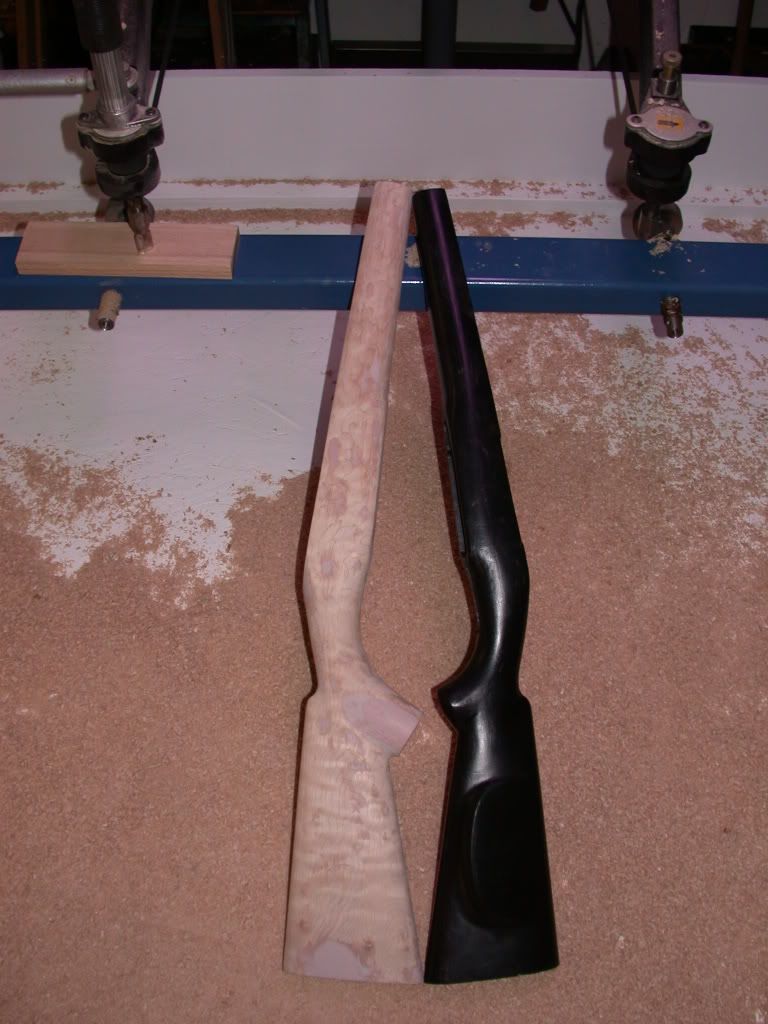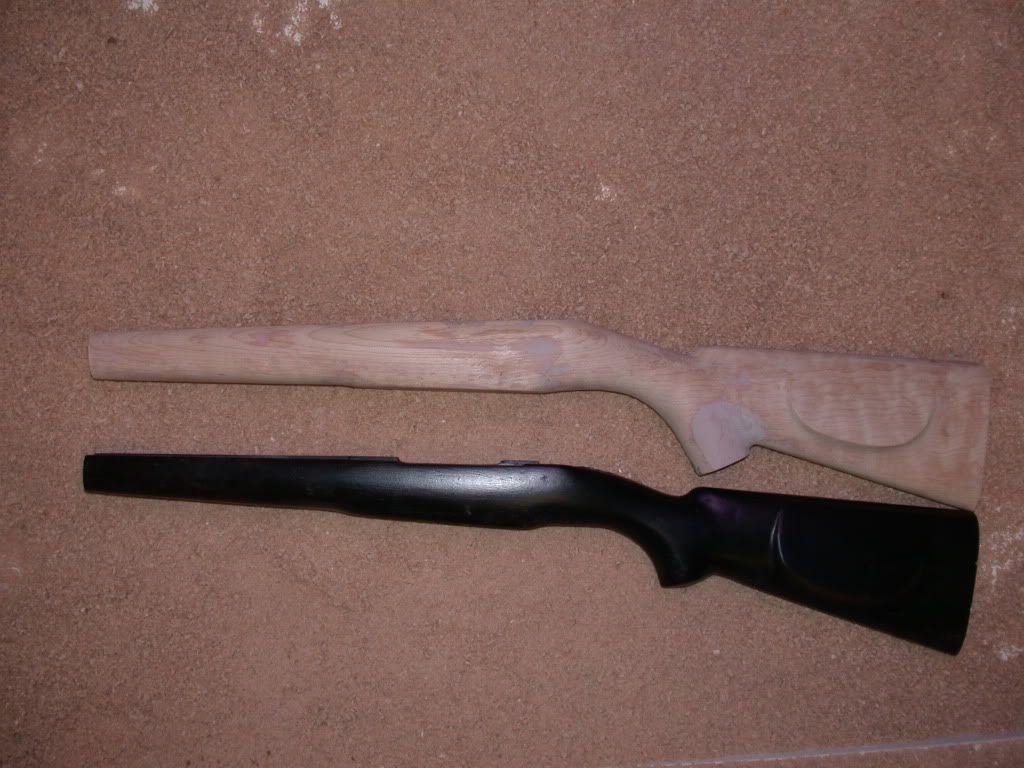Here we have a photo of a pattern stock with two blanks, then a photo showing the cast off on the end of the blank and 3 photos of the duplicator setup.
Below is the pattern stock laying on a cull maple blank. The maple blank will go to the duplicator for making another pattern stock, with the shape of the pattern stock but inletted for a Mauser instead of the Brno 602. I will also change the cheek piece and lengthen the grip. The dark blank is a piece of Claro Walnut, reserved for my 450 Dakota. The pattern has been painted with the high strength Polane paint, this gives a tough surface for the tracer stylus.
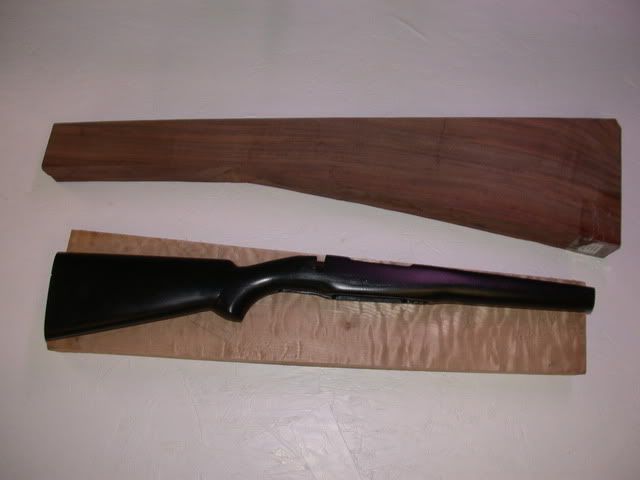
Next is the end of the blank, showing the 3/8” offset for the cast off. This blank is 2-1/2” inches wide, and barely wide enough for both the cast off and the width of the forend, so a bit of juggling was required when setting the blank up in the duplicator. So, a note for those wishing to have a stock made with cast off, be sure the blank you buy is wide enough. I like at least a 2-3/4” width, but prefer a 3” thick blank. You can see the marks from the spur center that holds and rotates the blank.
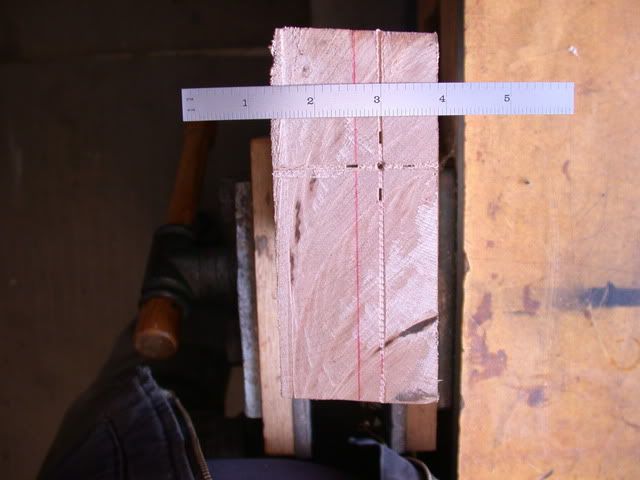
Below is the pattern and the blank set up in the duplicator. Over the pattern is a non powered tracing spindle. The spindle over the blank is powered by a 220V motor and runs at 12,000 RPM. The third spindle in the back is powered and is available if two blanks are to be carved at the same time.
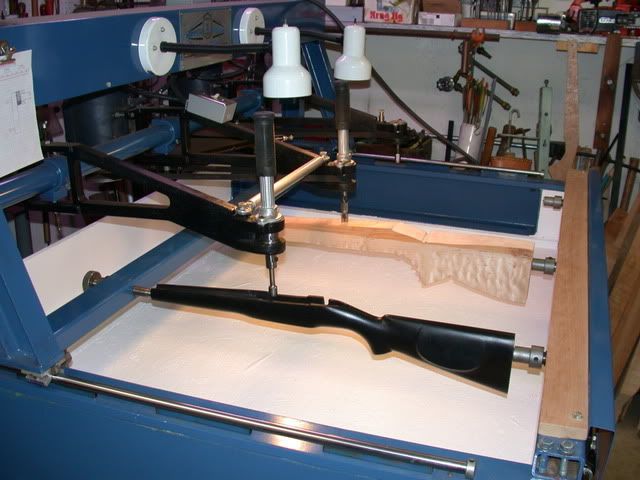
Below the pattern and blank have been rotated 90 degrees. The spur centers on the right are linked through a right angle gear drive with the pattern spur center, are turned with the hand crank, and are synchronized.
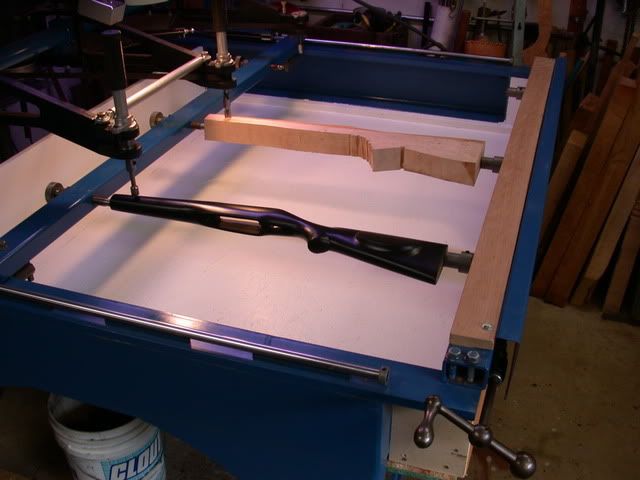
Below is the end view of the duplicator. Most of the carving is accomplished in a horizontal position, moving the tracer and the cutter side to side,then a little rotation with the hand crank, and repeating until the stock is carved all around. Note the tracing stylus and the cutter are the same size (This set is ¾” in diameter). I will switch to smaller stylus and cutter for the inletted areas of the stock and detail areas such as the pistol grip. Some are flat end, some are rounded.
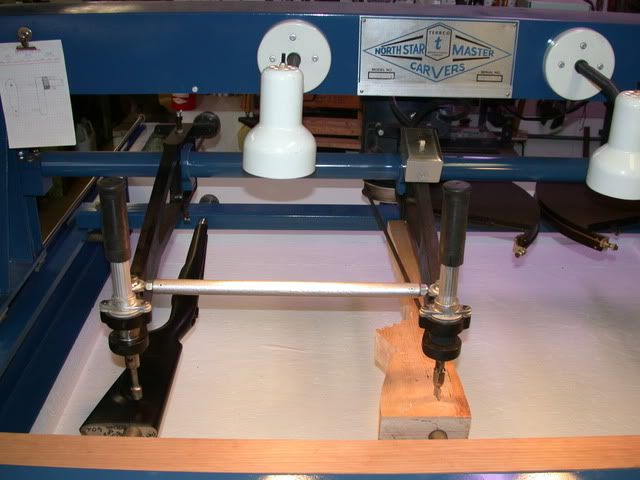
Rough Carving the blank. Like turning a bunch of beavers loose, chips flying everywhere! The cutter bit is set 0.100” higher than the tracing stylus for the rough cutting. After roughing, end radius bits will be used to work the curves around the pistol grip and cheek piece. Then the cutter bits will be set nearly at the same height as the stylus for the finishing cuts. I like to leave a little wood for sanding, around .020” or so.
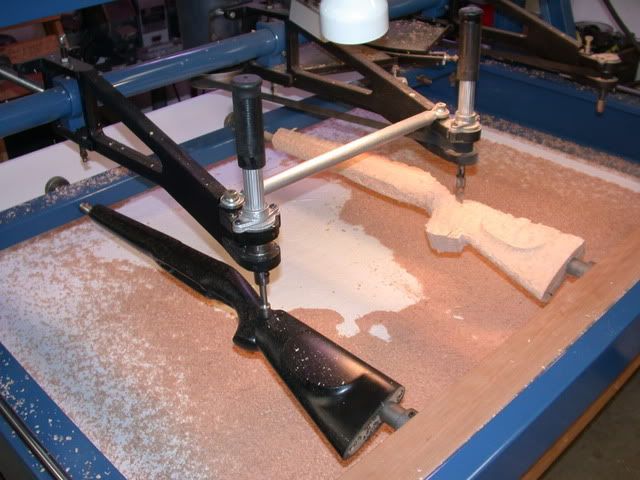
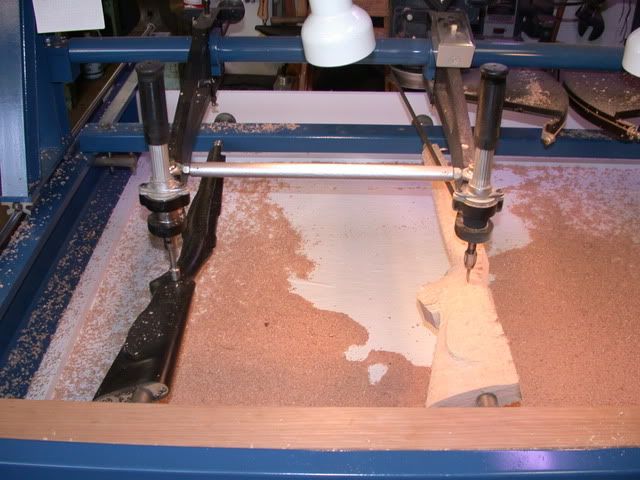
On this blank, I will not cut the pistol grip end as small as the pattern stock, instead I will leave it long and do the final shaping by hand. Remember I am making another pattern stock here, this one will be for a Mauser action. The grip will be longer (Intended final stock is for a 458 Win) to keep the fingers away from the trigger guard and being bruised by recoil. And the grip will have a hinged grip cap for spare sight blades, the 458 has a NECG banded front ramp with changable blades.
The cutter spindle is powered by a motor that is out of sight behind the cross beam of the duplicator, Look closely and you can see the skinny flat belt that runs from the motor pulley to the spindle pulley. Cutter is a straight flute router bit with two flutes. In operating the duplicator, you hold the two "handlebars" with the black rubber grips and guide the tracer stylus over the pattern. When starting, it is freehand, as the tracer stylus does not contact the pattern when removing most of the excess wood, this is why I set the cutter higher than the stylus. After the roughing, I reset the height for the finish carving and repeat the process.
This duplicator is essentially a 4 lever pantograph, the two black arms pivot on the blue main beam (which rotates in the end pices of the supporting framework) and are linked together at the front with the silver bar with rod end bearings. So the cutter follows the movement of the tracing stylus. The cross beam is supported by a framework on linear bearings and slides back and forth on the silver rods you can see on the duplicator base. By moving the handlebars, you have movement in all three planes (x,y and z) for true three dimensional copying.
Depending on the operator skill, the final carved stock will need only a good sanding
Cutters and Tracers
Below photo shows the tracer that matches the ¾” diameter square end cutting bit.
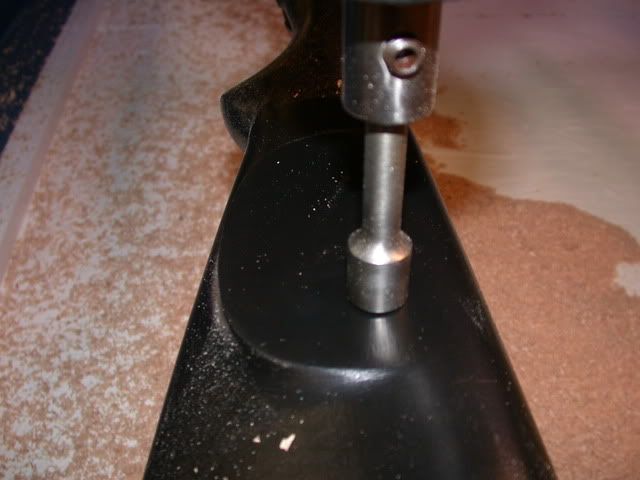
And the ¾” cutting bit is shown below. It runs at 12,000 RPM.
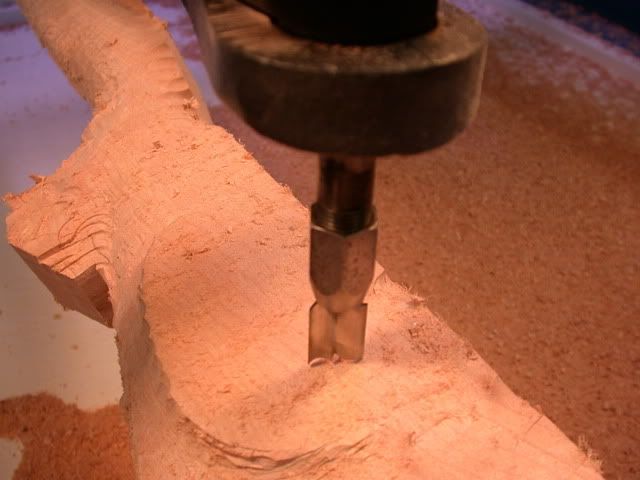
Tracers and cutters below, from 1/8” to 1” diameter, most of these are radius end. I will take a photo of more cutters and post later.
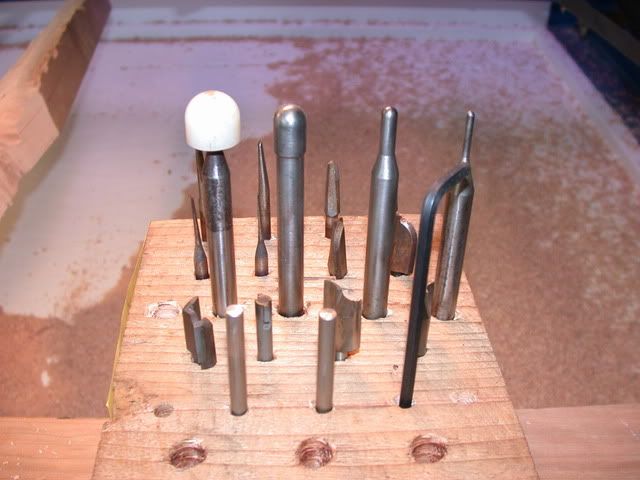
Mauser Pattern Stock
Showing the soon to be Mauser pattern stock fresh off the duplicator and set up in the sanding jig. The wide angle lens has the photo appearing a bit stubby, in actuality the stock has a more slender appearance. A bit of rough sanding and bondo application has been done to fair out the desired final shaping. Now it is sand and sand some more until I have the shape suitable. I left extra wood in the stock for final fitting to future drop box magazines. After I have the shape to my liking, the pattern will go back to the duplicator for inletting. I will use another Mauser pattern for tracing the inletting as the black pattern stock in the duplicator thread photos is for the Brno 602. The sanding jig is real handy, as the stock may be rotated while sanding. Has the same center and spur setup as the duplicator so the stocks will fit the sanding jig right off the duplicator with no modification. I have several other Mauser pattern stocks, but none are really suitable for high recoil big bore rifles, as they do not have enough drop or cast off, so I am making this one.
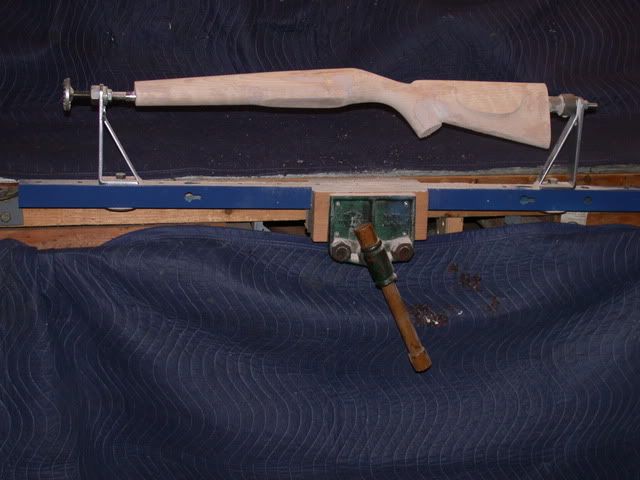
Now we will take a look at the two pattern stocks side by side. The black pattern is the original and the unpainted pattern stock is the one I am duplicating for the Mauser Actions. Note I have extended the grip, moved it rearward and increased the grip circumference. The black pattern stock was duplicated from a factory Brno 602 stock from a 375 H&H Rifle and has an added cheek piece, which is not present on the factory stock. I do not like the factory grip placement, and it is too short and will not allow me to place my pinky finger around the grip. Not a problem with the new Mauser pattern stock. I also reshaped the cheek piece a little on the new pattern. So, a little creative fussing with the duplicator will result in a completely different stock. Extra wood is left on the Mauser pattern stock to allow the final duplicated stock to be shaped as desired. The grip was moved back to keep fingers from being battered by the trigger guard under heavy recoil. (Next pattern stock I make will have a shallower grip, similar to the original Schuler 500's)
